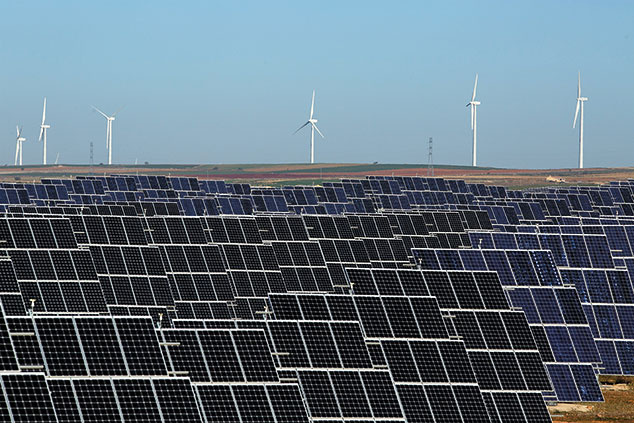
When renewable energy funds were first listed, it was easy to be sceptical. In the early days of wind and solar energy generation the technology was expensive and inefficient. So public subsidies accounting for half or more of expected income were required to give investors a competitive rate of return.
The other half of the funds’ income was to come from electricity sold to the grid at wholesale prices that were expected to rise steadily. They didn’t, perhaps because of the additional capacity.
Understandably, the UK government saw this enthusiasm for investment as an opportunity to limit the subsidies by closing what is known as “the Renewables Obligation” for new generating capacity in March 2017.
This caused howls of outrage from the industry and the environmental lobby but it was a shrewd move, recognising and encouraging the improving economics of renewable generation.
Solar energy is getting cheaper
Ricardo Pineiro, a partner of the Foresight Group, which manages the Foresight Solar Fund (LSE: FSFL), estimates that construction costs in the UK have fallen from £2.5m per megawatt in 2011 to £0.5m now, thanks mainly due to lower equipment and installation costs. In addition, technological improvement in panels has led to a 30%-50% increase in generation output. The “levellised cost of energy”, or breakeven electricity price, has dropped by 70%. This means that in Spain and Portugal, where the sun shines more reliably, solar costs are below unsubsidised wholesale prices. Iain Scouller, analyst at Stifel, estimates that point will be reached in the UK, where solar-energy yields are 40% lower, within ten years.
Foresight plans to invest in unsubsidised projects in the Iberian market, though not necessarily through FSFL. The UK would surely follow. Competitor Bluefield Solar (LSE: BSIF) is also targeting unsubsidised solar in the UK but, given the high cost of buying operational assets, intends to construct them itself.
The prospect of a renewable energy sector able to compete with fossil-fuel generation without subsidy is an attractive one and it is tempting to assume that long-term growth will ensure continuing good returns for investors.
A note of caution
Chris Brown of brokers JP Morgan Cazenove, however, is cautious. While FSFL shares yield 5.4% and BSIF 6.3%, they trade at premiums to asset value of 15% and 13% respectively.
FSFL has returned 7.6% per annum since launch in 2013 but that return has been helped by a steadily falling rate – now 6.5% – at which future cash flows are discounted to arrive at the net asset value. Returns to shareholders are bolstered by borrowings of up to 40% of gross assets of £1.1bn, but this adds to the risk. Brown’s main concern is that unsubsidised solar projects selling electricity at market prices “require much higher returns – at least 8.5%”. He prefers BSIF, with less debt and a UK-only focus (FSFL also has assets in Australia), but the logic of his caution is the same.
Scouller is also less than enthusiastic about the sector. He projects a gentle long-term uptrend in power prices but notes that, having spiked to £70 per megawatt hour in September 2018, they have since fallen to £40.
The pressure on professional investors to embrace renewable energy could easily drive valuations higher still. But the funds are taking advantage of investor demand to raise new equity, whether to invest or to reduce debt. That promises a better opportunity to invest for those under less pressure to be seen to be doing good.